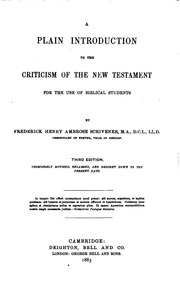Steven Avery
Administrator
https://www.facebook.com/groups/purebible/permalink/573020982789795/
Elisha Weismann
Something odd on the lettering on the 14th line up from the bottom of the 2nd row , there's an
9th century Cryillic Zeta.


γαρ εξεζητηϲεν
Isaiah 1:12
ουδʼ εαν ερχηϲθαι
οφθηνε μοι · τιϲ
γαρ εξεζητηϲεν
ταυτα · εκ των χει
ρων υμων πατει

This is on the page with this note Theophylact
#1
Isaiah 1 - Quire 43 f-1r
Isaiah, 1:1 - 1:27 library: BL folio: 42 scribe: B, overwriting by corrector d
https://codexsinaiticus.org/en/manu...ptionType=verse&translation=true&zoomSlider=0

Elisha Weismann
This almost looks like it could have been a Russian corrector because this is the type of Cryillic script used for Slavic languages, even in the 19th century.
Elisha Weismann
There's quite a few paleographic analysts in Jerusalem, one that is a personal friend of mine, I have emailed this to him and see if I can get a response without having to take him to dinner for his opinion LOL I can't guarantee the opinion won't be biased though.
Village Green? YUK. Last restaurant in Jerusalem I would ever go to LOL. I like MEAT (except pork-some habits die hard).
The bias would be in him not wanting to validate any NT ms because he thinks that all of them are corrupted, which would actually help in this case if he can just tell me WHEN he thinks the corruption happened LOL.
The Byzantine 4th Cent maj is more blockish and starts with a downward accent. The Cyrillic often starts with the accent pointing upwards, though both have the same form, it seemed more common to write them like this in the 9th century and beyond. I have not seen any 2-4th century Byzantine or Coptic script that forms the Zeta like this, and almost looped on the right corner. It's just a theory right now, but I don't think that's a 4th century Byzantine Zeta.
Yes, there are numerous Arabic paleographers, but for a Jew that's a inquire-at-your-own-risk. I have no non-Christian Arabic friends here
 There are some at Heb Univ-that are Jewish, none that I am on good terms with. I can make out some of the Arabic letters but not enough to put the words together. There's 2 words on that one in the 2nd column because yeh at the end of that first word is a vowel that would end that word and then begins with the Sin in the fine print (and keep in mind, these words are right to left).
There are some at Heb Univ-that are Jewish, none that I am on good terms with. I can make out some of the Arabic letters but not enough to put the words together. There's 2 words on that one in the 2nd column because yeh at the end of that first word is a vowel that would end that word and then begins with the Sin in the fine print (and keep in mind, these words are right to left).
Elisha Weismann
My thinking on the Russian Corrector was that if some of these were in possession of those whom Simonides also got the Russian Codex from, there could have been Russian correctors for this, being one of the 3 or so texts that the Simonides story hasn't accounted for at Athos. Wishing thinking and daydreaming, I know.
Elisha Weismann
Something odd on the lettering on the 14th line up from the bottom of the 2nd row , there's an
9th century Cryillic Zeta.
γαρ εξεζητηϲεν
Isaiah 1:12
ουδʼ εαν ερχηϲθαι
οφθηνε μοι · τιϲ
γαρ εξεζητηϲεν
ταυτα · εκ των χει
ρων υμων πατει
This is on the page with this note Theophylact
#1
Isaiah 1 - Quire 43 f-1r
Isaiah, 1:1 - 1:27 library: BL folio: 42 scribe: B, overwriting by corrector d
https://codexsinaiticus.org/en/manu...ptionType=verse&translation=true&zoomSlider=0
Elisha Weismann
This almost looks like it could have been a Russian corrector because this is the type of Cryillic script used for Slavic languages, even in the 19th century.
Elisha Weismann
There's quite a few paleographic analysts in Jerusalem, one that is a personal friend of mine, I have emailed this to him and see if I can get a response without having to take him to dinner for his opinion LOL I can't guarantee the opinion won't be biased though.
Village Green? YUK. Last restaurant in Jerusalem I would ever go to LOL. I like MEAT (except pork-some habits die hard).
The bias would be in him not wanting to validate any NT ms because he thinks that all of them are corrupted, which would actually help in this case if he can just tell me WHEN he thinks the corruption happened LOL.
The Byzantine 4th Cent maj is more blockish and starts with a downward accent. The Cyrillic often starts with the accent pointing upwards, though both have the same form, it seemed more common to write them like this in the 9th century and beyond. I have not seen any 2-4th century Byzantine or Coptic script that forms the Zeta like this, and almost looped on the right corner. It's just a theory right now, but I don't think that's a 4th century Byzantine Zeta.
Yes, there are numerous Arabic paleographers, but for a Jew that's a inquire-at-your-own-risk. I have no non-Christian Arabic friends here

Elisha Weismann
My thinking on the Russian Corrector was that if some of these were in possession of those whom Simonides also got the Russian Codex from, there could have been Russian correctors for this, being one of the 3 or so texts that the Simonides story hasn't accounted for at Athos. Wishing thinking and daydreaming, I know.
Last edited:

